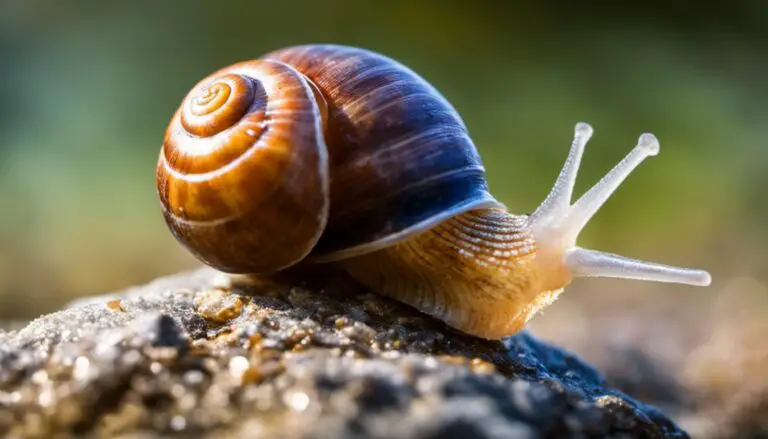The Sea Bunny: Unveiling the Mysteries of the Adorable Sea Slug
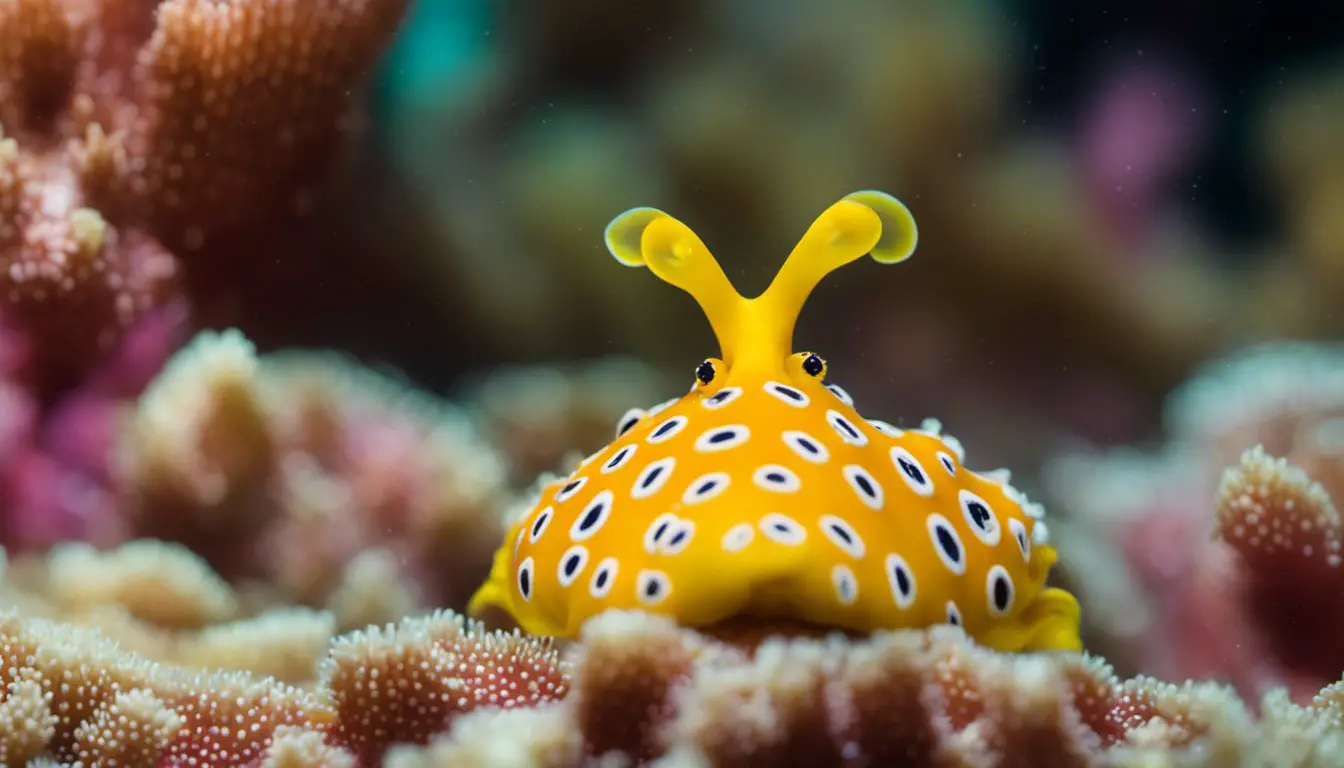
Sea Bunny, scientifically known as Jorunna parva, has gained popularity on social media due to their undeniable cuteness and resemblance to rabbits. You might be surprised to learn that these adorable creatures are not actually bunnies; they are a species of dorid nudibranch, a shell-less marine gastropod mollusk belonging to the family Discodorididae.

Originally described by Japanese marine biologist Kikutaro Baba, these fascinating animals can be found in the waters of the Indo-Pacific Ocean.
Their rabbit-like appearance comes from their peculiar rhinophores, closely resembling rabbit ears. The rhinophores at the front of their body serve as their primary sensory organs. In addition to their famous ears, sea bunnies are known for their fur-like projections called papillae, which cover their tiny, cylindrical-shaped bodies.
Now that you’re familiar with the basics of sea bunnies, it’s time to delve deeper into their world. In this article, you’ll learn more about the unique characteristics and behaviors that make these marine creatures so captivating. So, get ready to explore the sea bunny’s fascinating facts and charming allure.
Contents
Table of Contents
What Is a Sea Bunny?
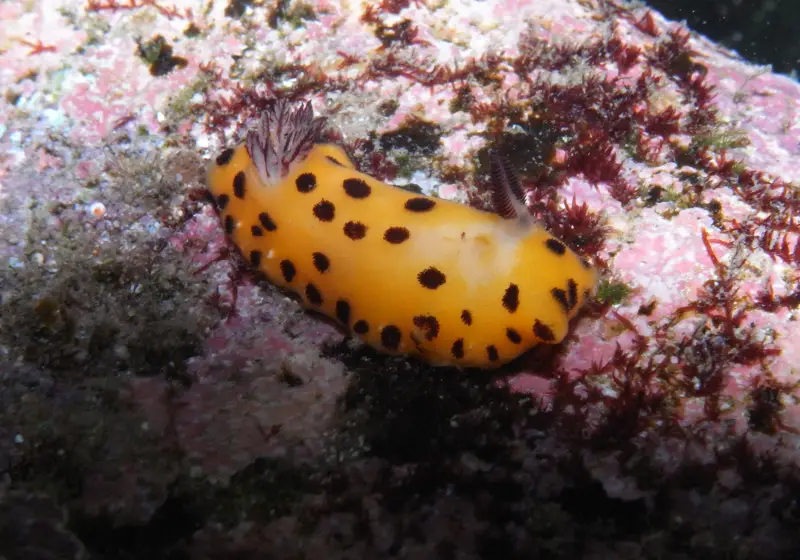
A sea bunny, scientifically known as Jorunna parva, is a unique and fascinating creature that has captured the attention of many due to its adorable appearance. Belonging to the family Discodorididae, these small marine animals are actually a type of sea slug, specifically, a nudibranch.
You may be surprised to learn that despite their cute and fluffy exterior, sea bunnies are not mammals but are, in fact, marine gastropod mollusks. Their rabbit-like appearance can be attributed to their rhinophores, which resemble bunny ears situated at the front of their body.
Sea bunnies are commonly found in the waters of the Indo-Pacific Ocean, and their popularity skyrocketed in 2015 due to their resemblance to rabbits.
One of the interesting features of sea bunnies is their fur-like appearance. However, this is not actual fur but small projections called caryophyllidia, which play a crucial role in detecting their surroundings. These caryophyllidia are densely packed on their body, giving them their unique and adorable appearance.
In addition to being attention magnets, sea bunnies also have a secret weapon: the ability to produce a toxic substance in response to predators. This toxin is derived from the sponge they consume as their primary food source. While their endearing appearance may make them seem harmless, this defense mechanism ensures that they are well-equipped to survive in their habitat.
So, the next time you come across a picture or video of a sea bunny, remember that beneath that fluffy facade lies a fascinating and complex creature with a host of unique adaptations and survival strategies.
Physical Characteristics
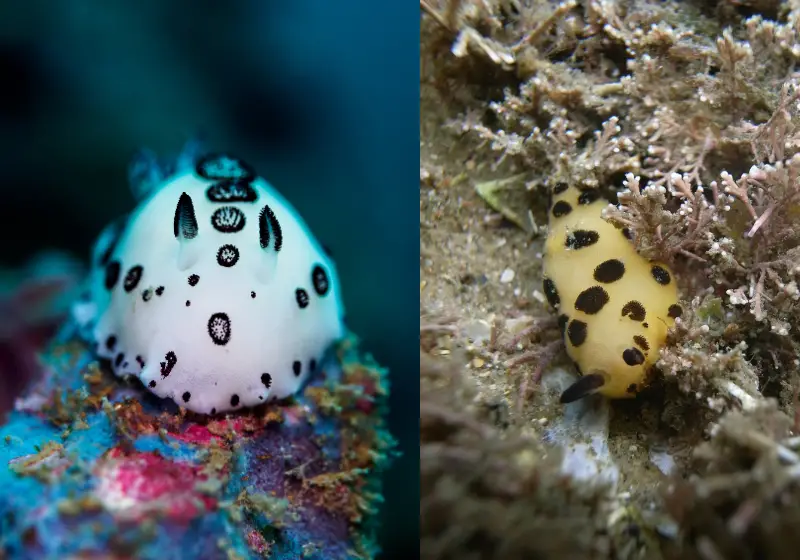
Color and Size
The sea bunny, also known as Jorunna parva, exhibits a range of extraordinary colors and color variations, including combinations of white, yellow, and black specks. This creates a speckled appearance that adds to their charm. Sea bunnies are small marine creatures with a maximum length of about 2.5 cm (1 inch) and a weight of up to 0.05 ounces (1.4 grams).
Sensory Organs
These fascinating animals have unique sensory organs called rhinophores, which resemble rabbit ears. Rhinophores are located on their head and function as chemoreceptors, helping them navigate and detect chemical signals in the water. In addition to rhinophores, sea bunnies feature two pairs of tentacles.
The upper pair is shorter and thicker than the lower pair, with the lower pair playing a role in detecting the environment and finding food.
Body Features
One of the most striking features of the sea bunny is its soft, elongated body covered in tiny bumps called tubercles. These tubercles give them their characteristic furry appearance, often called “fur.” The fur-like protrusions on their bodies are actually called short papillae, velvety projections arranged in rows along the body. Typically, the tips of these papillae contain white or yellowish pigment.
Another notable body feature of the sea bunny is the absence of a shell. As a type of dorid nudibranch, they belong to a shell-less marine gastropod mollusks group. Their gills, which can also have a furry appearance, are located on their back and help them breathe.
These captivating physical characteristics make the sea bunny a fascinating marine creature to observe and study.
Distribution and Habitat

The sea bunny, a fascinating species of sea slug, is predominantly found in the Indo-Pacific Ocean. These marine gastropods thrive in tropical waters, where they can be commonly seen along the coasts of several countries.
The sea bunny is quite popular in the waters surrounding Japan, but it’s not the only place they are found. What you might find interesting is that these captivating creatures can also be encountered in nearby tropical waters, such as the Philippines and Australia.
As you move further west, the sea bunny’s habitat expands to include the clear, warm waters of India’s Ocean. This vast expanse covers diverse regions, involving countries like Tanzania, Papua New Guinea, the Seychelles, Réunion, and many more. It is in these various coastal regions that these creatures find their ideal living conditions.
While exploring the ocean’s coasts, you’ll notice that the sea bunny prefers to dwell in areas with submerged vegetation. This environment provides both shelter and plenty of sustenance, allowing the sea bunny to thrive in these locations.
So, if you happen to venture to the tropical waters of the Indo-Pacific region, keep an eye out for the adorable sea bunny! An encounter with these unique creatures in their natural habitat is an experience you won’t want to miss.
Reproduction

As a type of sea snail, the sea bunny, also known as Jorunna Parva, is unique regarding reproduction. These creatures are hermaphrodites, possessing both male and female reproductive organs. This allows them to produce both eggs and sperm, making their reproductive process quite fascinating.
Unlike some hermaphroditic species, sea bunnies cannot self-fertilize their eggs. Instead, they rely on potential mates to help them complete the process. When two sea bunnies encounter one another, they attach and engage in a sperm exchange process. This exchange ensures that both animals contribute equal amounts of genetic material to their offspring.
The sea bunny transitions to the female role to lay its eggs, depositing long, spiraling egg masses on structures such as rocks or algae. These egg masses contain hundreds to thousands of individual egg cells, which are then fertilized by the sperm from another sea bunny.
Over time, the fertilized eggs develop into larvae, eventually hatching and joining their fellow sea buddies in the aquatic environment.
Understanding the reproduction of the sea bunny is important, particularly due to their short lifespan. This unique hermaphroditic ability allows the species to maintain their population in the wild, ensuring their continued survival in the Indo-Pacific Ocean.
In summary, sea bunnies’ reproductive process involves male and female roles, as they are hermaphrodites. They exchange sperm with other individuals, lay fertilized eggs, and contribute to the survival of their species in the ocean. Nature has truly provided these adorable creatures with a fascinating and effective means of reproduction.
Diet and Predators
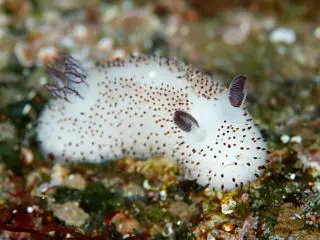
Understanding their diet and predators plays a crucial role in their survival in the underwater world of sea bunnies. As a type of sea slug called Jorunna parva, their primary food source is algae. They use their radula, a special tongue-like organ with rows of tiny teeth, to scrape off algae from various surfaces like rocks and seagrass. Your sea bunny tends to prefer green algae but won’t hesitate to consume other types of algae and seagrass when necessary source.
However, they also have a more carnivorous side. These cute creatures are voracious hunters of jellyfish, such as moon jellyfish, lion’s mane jellyfish, and fried egg jellyfish. Their rhinophores can detect chemicals from these invertebrates, which helps guide them to their prey source.
Now, let’s talk about their predators. Various marine species pose a threat to sea bunnies. Some include sea stars, fish, crabs, shrimp, and sea turtles. While birds, especially sea birds, are not mentioned as direct predators, they might still pose a threat if sea bunnies are found near the water surface.
But don’t worry; your sea bunny has developed a unique adaptation to protect itself from some predators. They can steal stinging cells from jellyfish, incorporating them into their defense mechanism. This aids in warding off potential threats source.
Another intriguing feature worth mentioning is their caryophyllidia, which are the velvet-like projections on their body. These give sea bunnies their fluffy appearance and allow them to blend in with their surroundings, providing some level of camouflage to deter predators.
Survival Mechanisms

Defensive Mechanisms
Sea bunnies, scientifically known as Jorunna parva, have fascinating defensive mechanisms to protect themselves from predators. They are known to steal the stinging cells from jellyfish and use them for their defense. This tactic can deter potential predators such as sea stars, fish, crabs, shrimp, and sea turtles.
In addition, their diet consists of toxic sponges, which contain toxins that sea bunnies can absorb into their tissues, making them toxic to predators as well.
As you encounter these adorable creatures, you might notice that they appear shy. They often retract their tentacles when threatened, which is another tactic they use to protect themselves from harm.
Camouflage and Sensory System
Another critical survival mechanism sea bunnies rely on is their ability to blend in with their surroundings. They can change their color and pattern to match their environment, such as green, among seagrasses or algae.
Their sensory system also significantly affects their ability to navigate and survive in their habitat. They have two pairs of tentacles at the front of their body, which serve as their primary sensory organs. The upper pair is shorter and thicker than the lower pair, and these tentacles help them detect chemical cues and locate food sources, such as sponges and algae.
As you explore the world of the sea bunny, remember that their unique adaptations and survival mechanisms have allowed them to thrive in their underwater habitats, making them a fascinating subject for marine biologists and enthusiasts alike.
The Insane Biology Of The Volcano Snail
Research and Importance
Scientific Research
As you explore the fascinating life of the sea bunny, you’ll find that scientists have researched these adorable sea creatures and their potential applications in various fields. For example, they’ve discovered that some chemicals found in sea bunnies could potentially be used in cancer treatments.
While these findings are still preliminary, they highlight the importance of studying diverse marine life and the benefits they could bring to human health and the medical field.
Media and Popularity
The sea bunny’s unique appearance has not gone unnoticed by the public. In recent years, it has gained considerable attention on social media, particularly in Japan, where its rabbit-like features have captured the hearts of many.
This surge in popularity has led to an increased interest in studying these little creatures, contributing to a greater understanding of their behavior, habitat, and abundance.
This widespread media coverage and subsequent fascination with sea bunnies helps raise awareness about the vast diversity of marine life and serves as a reminder that even the smallest creatures can significantly impact a larger scale. By learning more about the role of sea bunnies in their ecosystems, we can help conserve and protect these precious animals and their environment for future generations.
Moreover, the sea bunny’s rise in popularity on social media is an example of how the power of media can be leveraged to shed light on lesser-known species while highlighting the importance of continued research into the treasures hiding in our oceans.
With a confident and knowledgeable approach, you can also raise awareness about the sea bunny and other fascinating marine life.
Frequently Asked Questions
What is the scientific name of a sea bunny?
The scientific name of a sea bunny is Jorunna parva. They are a species of sea slug that has captured the attention of many marine enthusiasts due to their unique and adorable appearance.
Are sea bunnies venomous?
No, sea bunnies are not venomous. They are harmless marine creatures that feed primarily on sponges and other small organisms found in their underwater habitats.
Can you keep a sea bunny as a pet?
Keeping a sea bunny as a pet may not be the best idea, as they have specific requirements for their care and living conditions. Also, being wild marine creatures, they may not thrive in home aquarium setups. It is best to appreciate their beauty in their natural environment or by viewing them in public aquaria where experts support them.
What are the different colors of sea bunnies?
Sea bunnies can come in various colors, which allows them to blend in with their surroundings. They can be found in shades of white, yellow, orange, brown, and black. The coloration may vary depending on their geographical location, diet, and other factors.
Is the sea bunny endangered?
There isn’t much information available regarding the conservation status of sea bunnies. However, they are not listed as endangered species. As with other marine species, their ecological balance could be impacted by factors such as pollution, habitat destruction, and climate change. Protecting and preserving their natural habitat is essential to maintain their populations.
Can I touch a sea bunny?
It is generally not advisable to touch marine creatures, including sea bunnies. Touching them may cause undue stress or harm, as their delicate skin and body structures are not designed for handling. Additionally, touching any marine life could disrupt their habitat’s balance or affect the health of other animals and their ecosystem. It is best to observe and admire sea bunnies safely without touching them.




